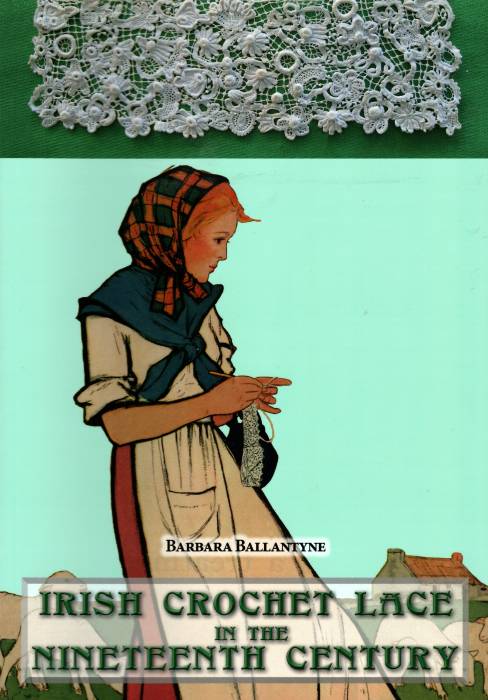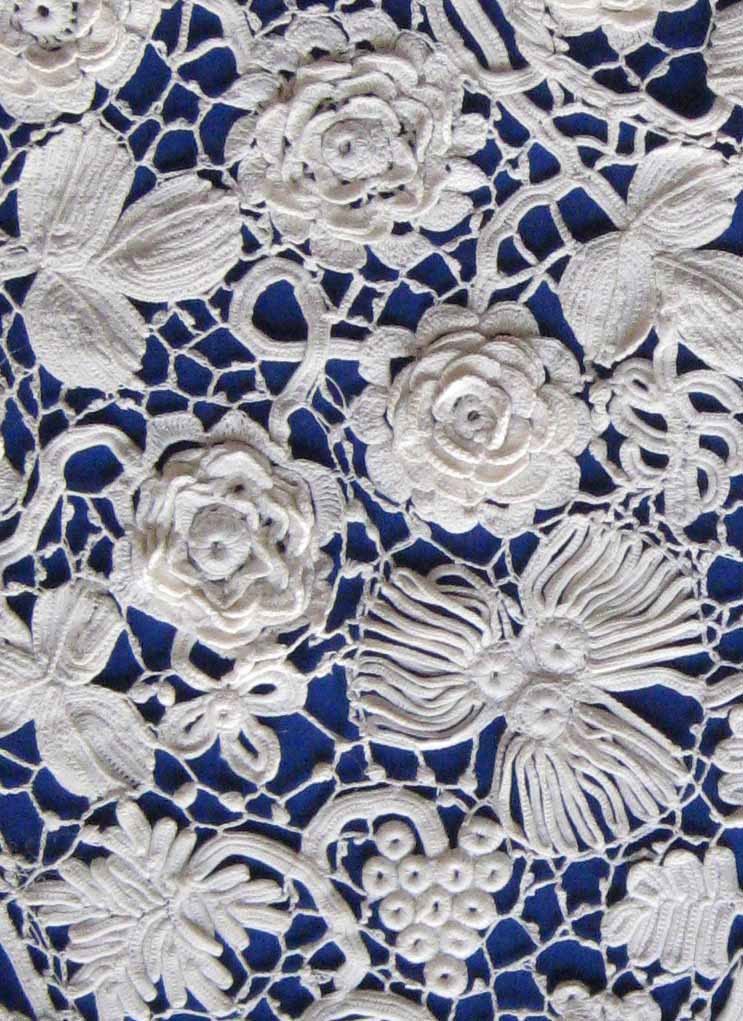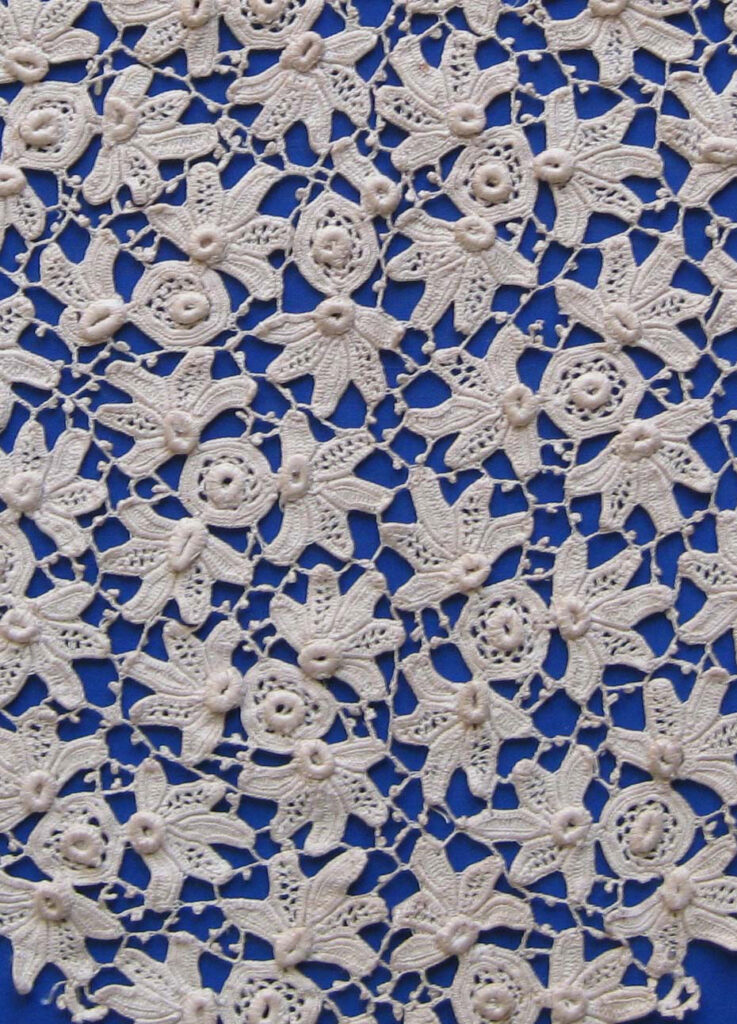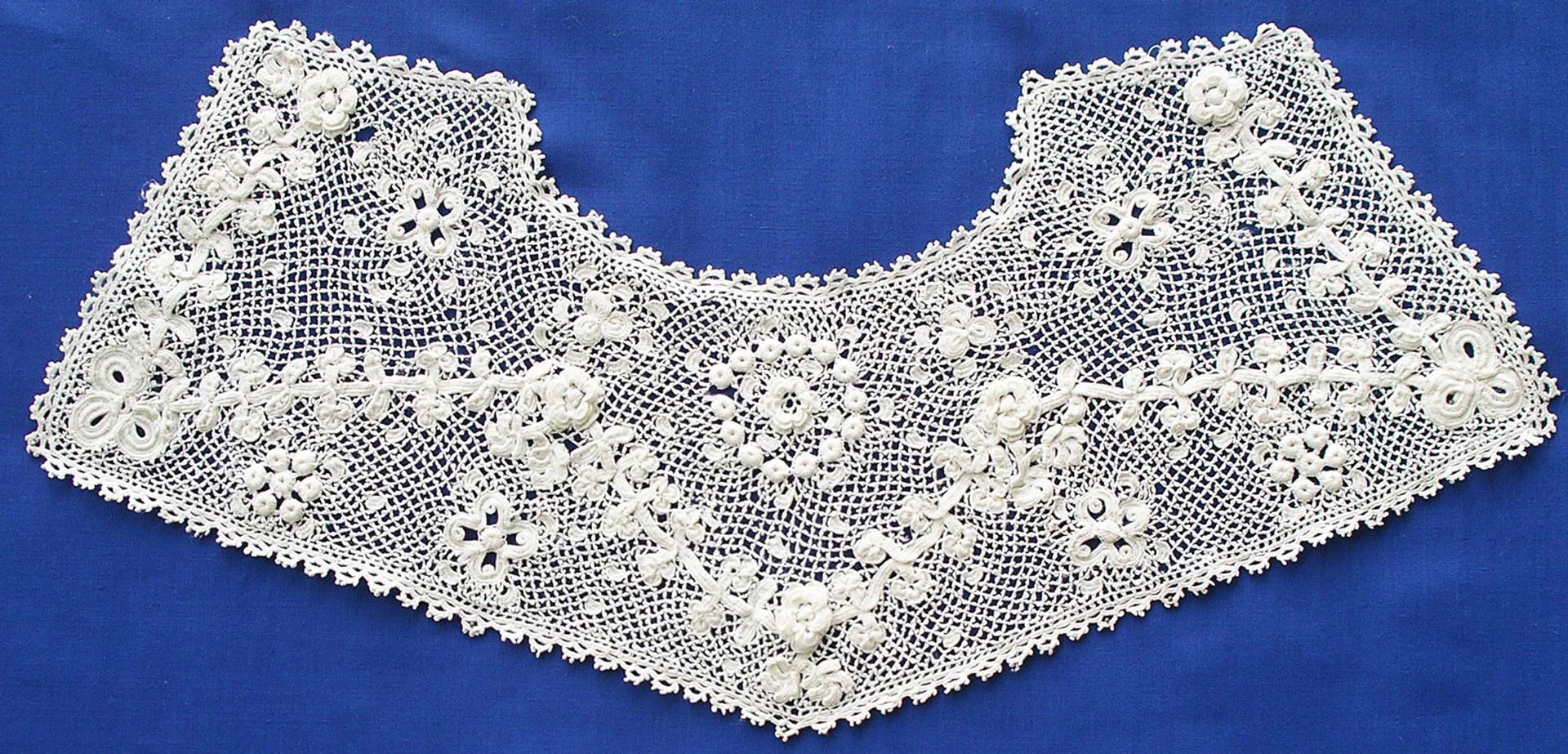Irish Crochet Lace in the Nineteenth Century
Irish crochet lace was created by Irish women during the Great Irish Famine (1846–1853). Even though it began as a less expensive version of the traditional bobbin and needle laces it soon developed into an art form in its own right. The income it provided saved many thousands of lives in the desperate times. Like all the Irish laces, it was born in poverty.
This book shows 34 laces, mostly from my own collection but also a few from the Cavalcade of History and Fashion (https://thecavalcade.org) from an Irish museum (https://www.corkcity.ie/en/cork-public-museum/) and the literature.
There is an amazing variety of styles, reflecting both the diversity of the traditional laces which inspired them and the versatility of the technique of crochet.
Some of the laces have large heavy motifs whereas others are fine and delicate. A few are also informal and naïve as well as shown at (A).
The motifs in the original Irish style tend to be relatively flat and are commonly arranged asymmetrically in limited areas of one simple background. (B)
A new form developed in the late 1800s. Small motifs such as a raised rose or shamrock were surrounded by picot loops and shells to form round or square units. Called ‘Baby’ Irish crochet or ‘trellis work’, it was dainty and much easier to work than the older forms. It was also ideal for the Edwardian fashions.
Note the raised roses at the top of the ‘Baby’ form combined with motifs.

Title: Irish Crochet Lace in the Nineteenth Century
Price: $10
Number of Pages: 88
SHIPS IN 3-5 DAYS


